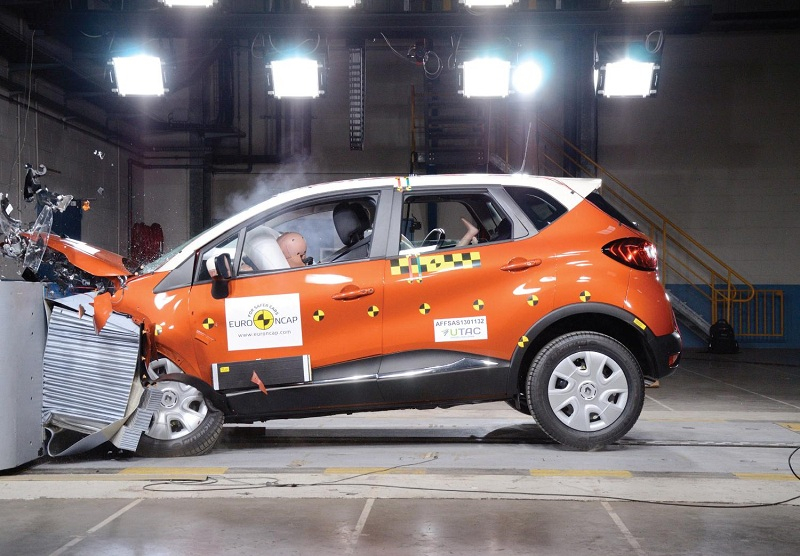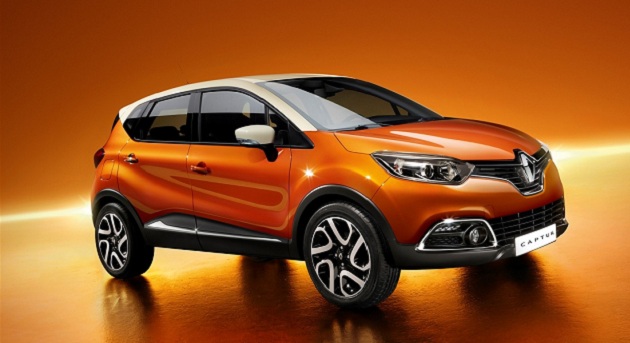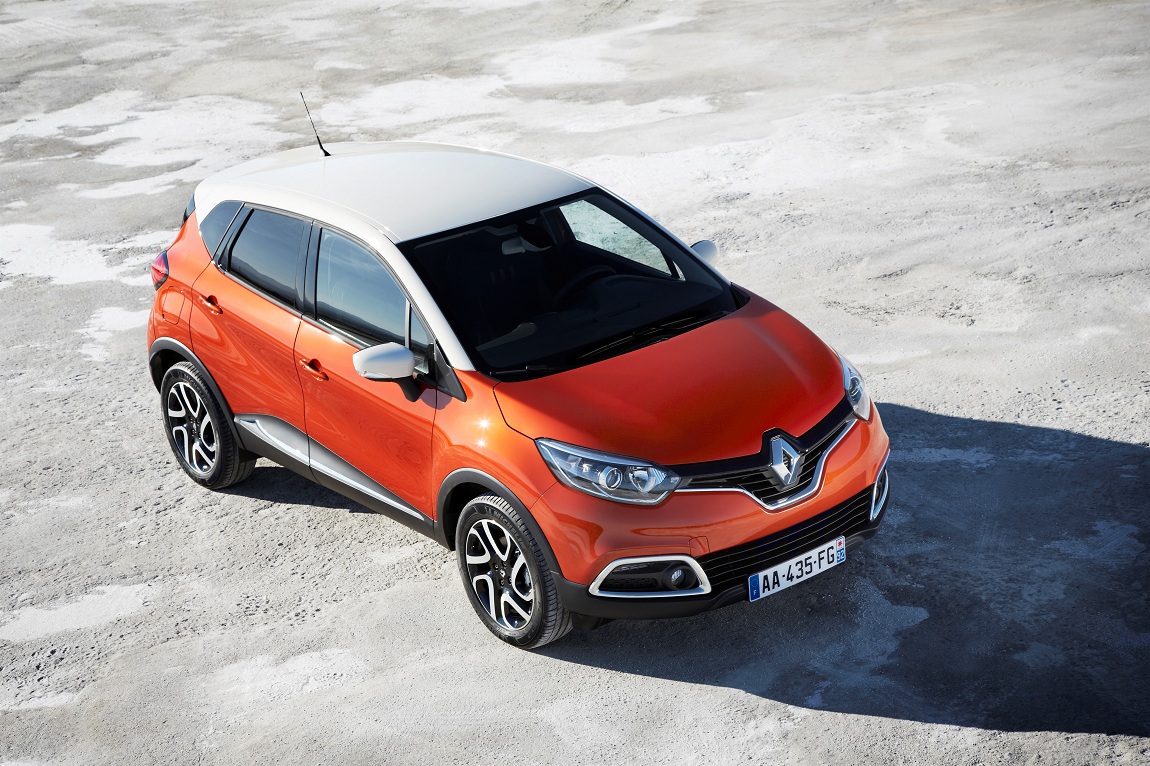


Renault Captur has been awarded a five-star rating following passive tests carried out by Euro NCAP. The result was achieved despite further increasing of the independent body’s scoring procedure in January 2013 and provides additional evidence of Renault’s passive safety expertise.
Renault Captur obtained a global score of 80.5 percent to become the 15th Renault model to secure Euro NCAP’s maximum five-star passive safety rating. In addition to this formal recognition of its safety performance, Renault Captur also delivers reassuring dynamics thanks to its precise, responsive chassis.
A holistic approach for optimal protection of all occupants.
The objective was clearly for Captur to provide the same high standard of passive safety as New Clio, since both cars share the same platform. Renault’s safety performance is founded on the results of road accident research and the real-world behaviour of motorists with a view to developing safety solutions based on an even more holistic, efficient approach. To guarantee even more effective occupant protection, Renault Captur’s electronic architecture was designed to ensure that the latest-generation protective systems are triggered even sooner.
Adult occupant protection
In a head-on impact, Captur’s front occupants are protected by two high-efficiency airbags, as well as by seat belts equipped with pretensioners and load limiters calibrated at 400daN. At the rear, all the seats are equipped with three-point seat belts, plus load limiters for the outer seats.Specific work concerning occupant protection in the case of side-on impacts has been rewarded with the impressive score of 7.9 from 8. In order to detect impacts and to respond up to twice as quickly, Captur features two impact detection sensors on each side, one in the front doors and the other in the B-pillars. A specific algorithm adjusts the way the new-generation head-thorax airbags are deployed to match the severity of the impact.
Combined with those of the ‘pole’ and ‘rear impact’ tests, these results helped Renault Captur to obtain 32 points from a possible 36 for adult protection, which is one of the best results ever obtained in the small car segment.
Child protection
Thanks to the overall design of its structure and to the availability of three-point Isofix child seat anchorage for the front passenger seat and the outer rear seats, Captur’s child protection rating figures among the very best in the B segment with a score of 39 points out of a possible 49, despite the recent increasing of procedures.Renault Captur among the very best for pedestrian protection
The front end of Captur was designed to minimise injury to pedestrians. The bumper has no salient edges, while the lower part of the windscreen, which is traditionally very rigid, was designed to reduce the risk of injury in an impact. Meanwhile, the height of the bonnet was raised in order to incorporate a crumple zone between the structure and the uppermost parts of the engine. Thanks to a score of 22 points out of 36, Renault Captur has emerged as one of the best cars in its class in this area, too.Safety in its genes… plus equipment
Renault Captur is equipped with cruise control and a speed limiter as standard, as well as audible and visual seat belt reminder warnings for all seats, plus ESC. It consequently claimed a score of seven points based on the new, more severe scoring methods.A pragmatic approach and real engagement
Renault’s approach to safety is founded on a detailed study of actual accidents and real world safety with a view to proposing products that correspond with the realities on the road, including the incorporation of safety equipment as standard from the very first equipment level. The priorities consequently focus on the development of the most efficient technologies to a) prevent an accident happening in the first place, b) ensure corrective action can be taken in unexpected situations and c) protect passengers when an impact does occur. Renault’s holistic approach does not boil down to just one equipment feature or technology. Over the years, Renault has emerged as a benchmark for automotive safety and this is mirrored in the results its models have secured in media ratings.When it comes to active safety, the qualities of the chassis, combined with auto-adaptive digitalisation of the vehicle’s dynamics, permits emergency situations to be detected with precision. The ABS and ESC functions, which are both standard, are even more efficient and are triggered at just the right moment to prevent jarring. The emergency brake assist function is incorporated in an electronic control unit/hydraulic unit.

Last but not least, work on ergonomics means that drivers are able to concentrate on the road ahead. For greater comfort, the clarity and graphics of the instruments have been designed for information to be particularly easy to absorb. Renault Captur also benefits from modern driving aids such as advanced navigation, voice commands for certain functions (in the case of versions equipped with the R-Link multimedia system), the automation of tasks such as headlight and windscreen wiper activation, plus rear parking sensors, and even a reversing camera for certain versions. All versions of Captur are equipped with Bluetooth® hands-free telephony.
Renault’s five-star Euro NCAP-rated models
Laguna II Five stars (2001) Vel Satis Five stars (2002) Mégane II Five stars (2002) Espace IV Five stars (2003) Scénic II The first five-star rating in its segment (2003) Modus The first five-star rating in its class (2004) Mégane Coupé Cabriolet Five stars (2004) Clio III Five stars (2005) New Laguna Five stars (2008) Koleos Five stars (2008) New Mégane Five stars (2008), the best score ever obtained, irrespective of segment New Scénic Five stars (overall rating, 2009) New Clio Five stars (overall rating, 2012) ZOE Five stars (overall rating, 2013) Captur Five stars (overall rating, 2013)









